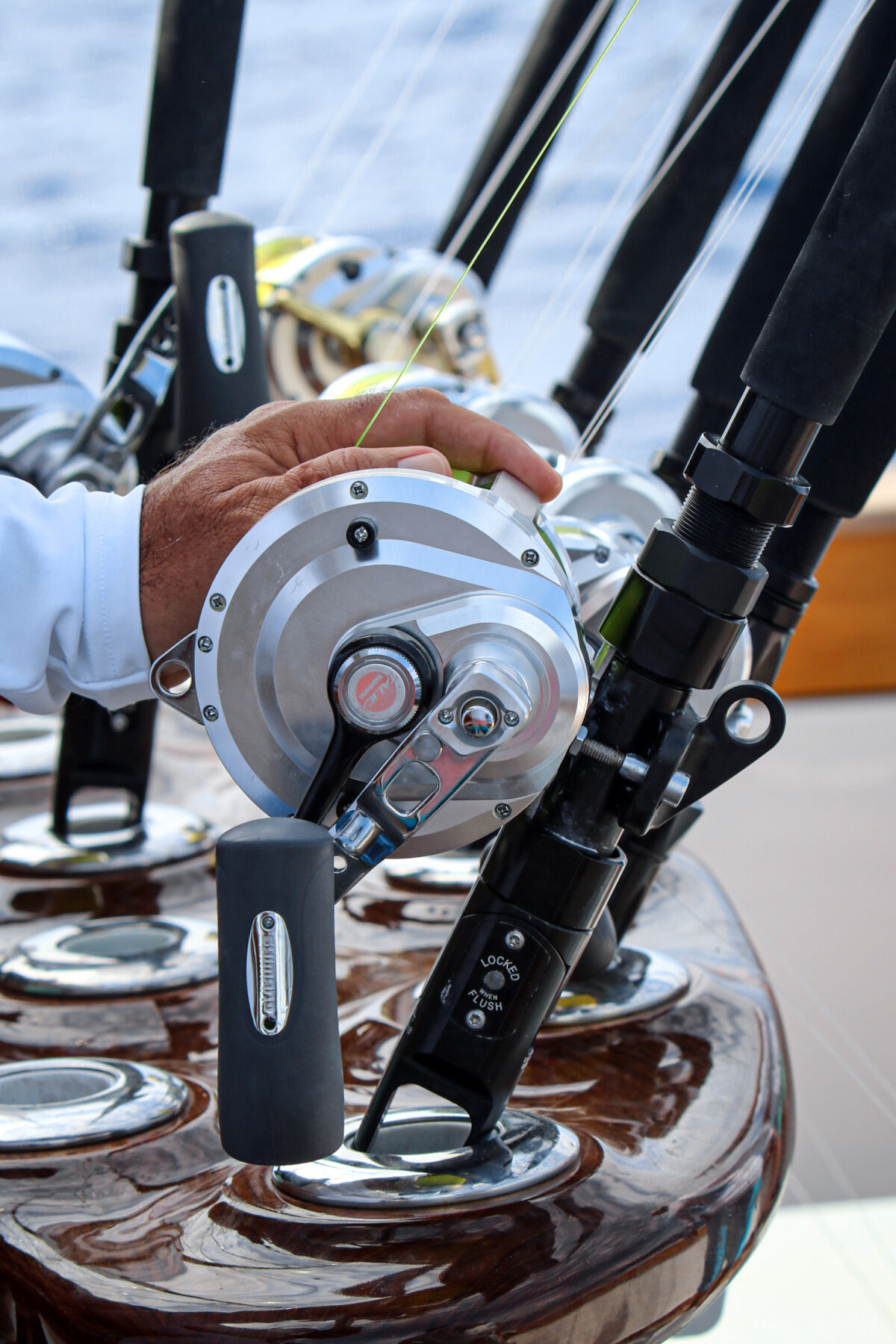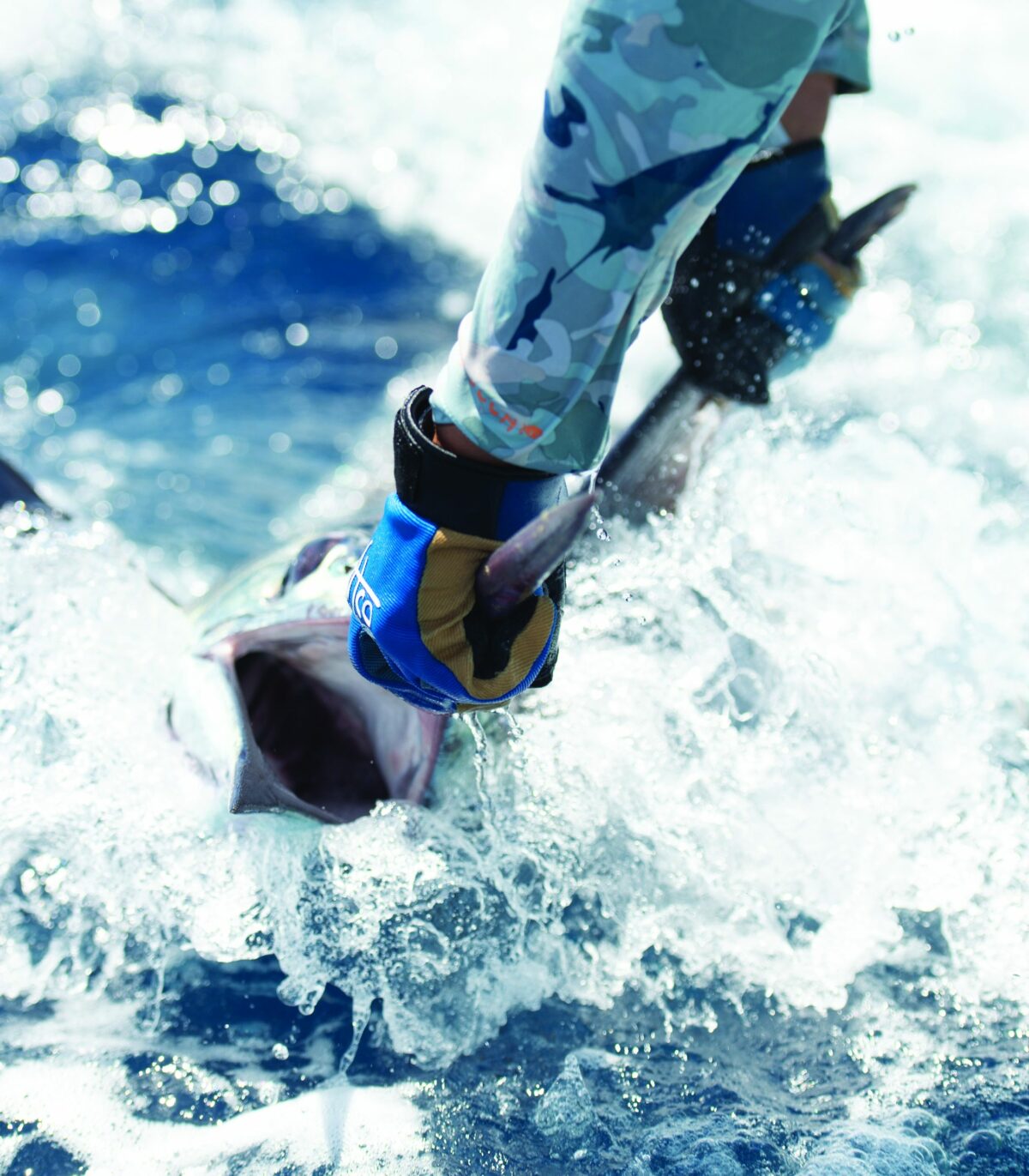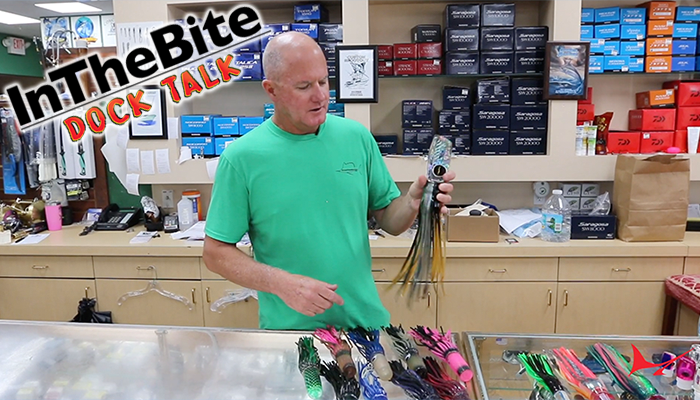Much like a traveling circus, it requires an enormous number of moving parts, pieces and equipment to keep a sportfisher on the road bringing happiness, and bites, to its owners and crew. Just taking care of the boat itself requires a captain with an amazing attention to detail and a skill set that ranges from plumber, electrician, mechanic, cook and everything in between. And all that’s before the boat ever leaves the dock. Once at sea, the captain switches to fishing mode, putting his anglers on the bite and making sure they enjoy a successful day on the water. The fishing is the reward for all of the other mundane tasks that captains and mates alike endure over the course of a season.
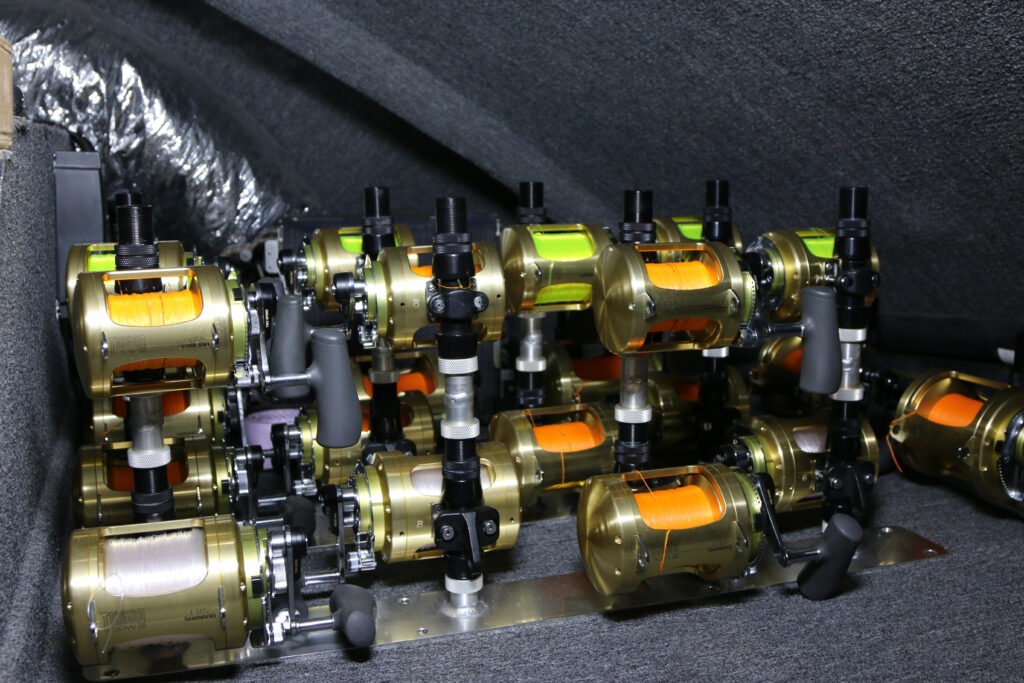
A Shopping Spree
One of the more fun aspects of starting, or refreshing, a sportfishing program comes when it’s time to outfit the boat with new tackle. While many captains order a lot of products online, others enjoy a more hands-on shopping experience. Imagine showing up at your favorite offshore outfitter with the boss’ credit card and carte blanche to “get what we need.”
“We usually just go to Bill Buckland’s Fishermen Center in person and start grabbing stuff off the shelf and putting it in boxes,” says Capt. Randy Baker, who runs the 63-foot F&S, DACIA. “When we bought the boat in November of 2020 (it was the old Sea Angel that had been in Los Sueños forever) the boat was an ‘05, but it had been totally refitted in 2018, so it was basically brand new when we bought it. But it was a bare boat, and we had to re-outfit the boat 100 percent.” On the other end of the spectrum, Baker and his boss just bought a 43- foot G&S (formally the Hebe) in Cape Verde that was completely outfitted. “It pretty much had everything on her that I would normally get.”
Capt. Newt Cagle, who is now running the globe-trotting Big Oh program, knows that the list of gear needed to outfit a boat can be longer than a trans-Atlantic crossing. “I’ve been fortunate enough to build several programs in the past, so I’ve kept a list of all the things … tackle, safety equipment, parts … that I have bought. I try to use the same tackle shop — I use White’s Tackle in Fort Pierce, Florida — and they keep a record of everything I’ve ever bought. If we start running out of things, I’ll tell them to send me my list, and I will go through there and circle some things. Same thing with a new operation. I’ll circle everything we need to get started and tell the boss this is what we need to get started and this is how much it’s going to cost. I’ve been very fortunate — the owners that have hired me trust me to lead them in the right direction as far as tackle goes.”
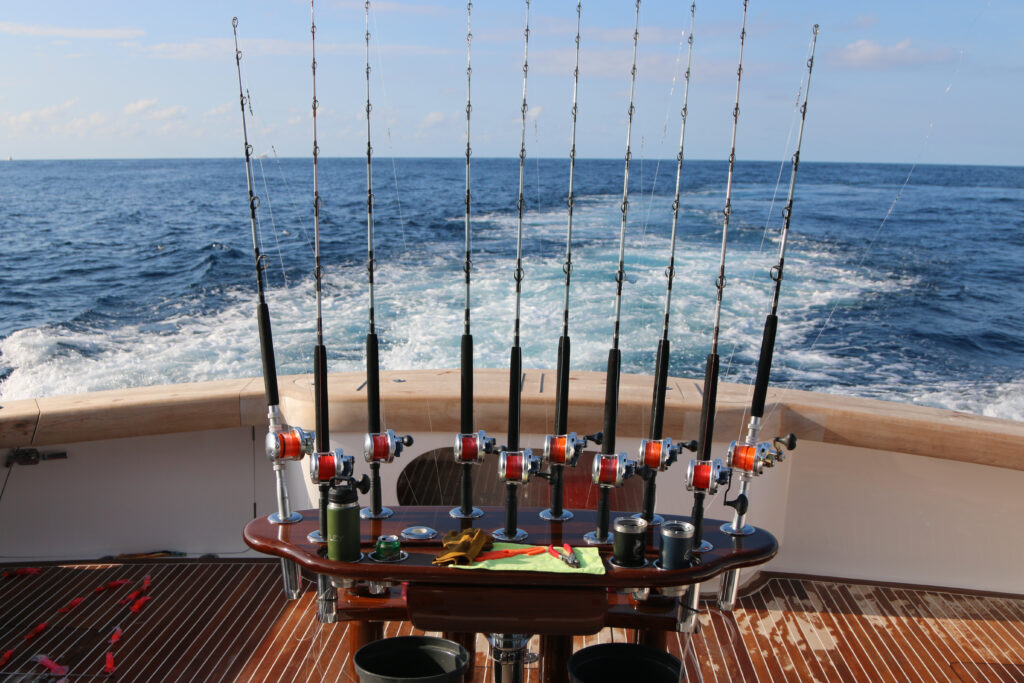
Baker enjoys the same 100 percent backing from his owners, but even Baker admits that he’s been with the same owner for quite a while. “It’s really quite a list of things you need, and once you really dive into the terminal tackle stuff — leader, crimps, hooks, teasers, tools, drag scales—it becomes quite a long list,” he says. “And since we are always traveling somewhere, we always bulk up. In a lot of places, if you ain’t got it, you ain’t going to get it! It can take days or weeks to get something.”
Nowadays, even U.S.-based operations sometimes have a hard time getting parts and gear due to sheer demand and COVID backlogs. Capt. Mark DeCabia splits his time between running a fleet of three commercial boats, being a private boat captain and running a private label tackle company called Broadbill.com. His New Jersey-based Canyon Runner charter boats have been some of the most successful in the Northeast for the past 40 years.
“I’m a fulltime commercial fishermen and private boat captain, and there were times where I couldn’t get the tackle that I needed. Until you have some pull, and power, you don’t get what you need, you don’t get the service. That’s what the middle-of-the-road guy doesn’t get,” DeCabia says. “Broadbill.com will tell you who to get what from, do this, do that, use this guy. It’s a service, like a concierge-type service. I can get some of the stuff for you, but I prefer that you deal with the builders I suggest.
“Up here in the Northeast, information can be hard to get, a lot of guys are tight-lipped. So if you’re a guy with kids and not a lot of time, you go through a lot of trial and error before you get things right. I don’t mind helping those guys out at all. I do two or three seminars each year with between 200 and 400 people on average at each one. The reason I can get stuff sometimes is because of the relationships that I have with the companies due to the seminars. You are only as good as your teacher, and I’ve had a lot of good teachers over the years.”
Rods
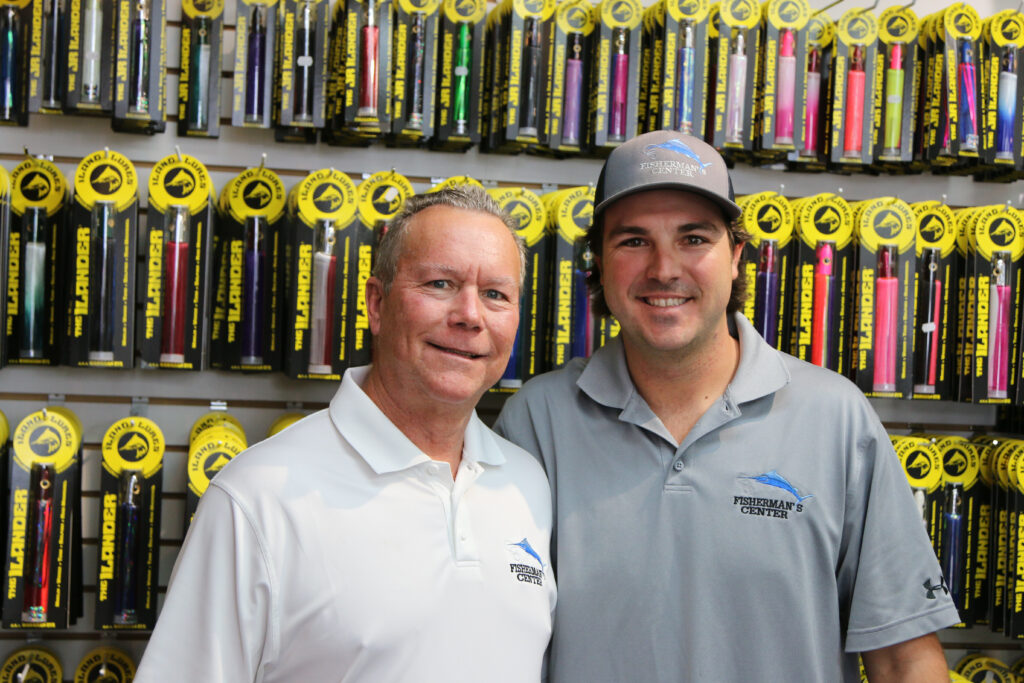
DeCabia has outfitted a lot of boats over the years, and when it comes to rods, he picks the rod builder depending on the needs, whims, and budget of the client. “Some guys want fancy … cocobolo wood hosels where the foregrip tapers into the rod,” says Decabia. “We live in a fashionable industry. There’s some stuff you don’t want to be using every day. Eventually, you will have to rewrap or maintain these rods.
“There are several different levels: charter boat level, fully functional, no glam, black threads and a couple of silver streaks. Set matches, very simple. You go to the next level with a little better guides, maybe add some more color, nicer foam grips. Then you have the really artistic rods, even better guides, cork instead of foam. Just like anything else you can go as far as you want. A lot of tackle depends on where you are based out of — people in the NE are different from the ones down south. Up north, you need a lot more rods.”
“So they go a little bit less on the fancy side. Unlike guys who are specializing on sails and smaller marlin who can get away with a 10- to 12-rod set … up north we have like 30 rods on the boat!” The advent of braided lines over the last 20 years has made a big difference in the way most teams target billfish. Heavy-tackle is usually relegated to heavy-tackle places, where fish over 500 pounds are encountered in good numbers. Everyone stands up with light tackle and the rod action reflects these tactics. “Most billfish rods are more parabolic … less stiff. Sure, you can still use a stiffer rod for certain things, but most of the circle-hook fishing is done on rods with a softer tip so the angler can feel the bite,” DeCabia says.
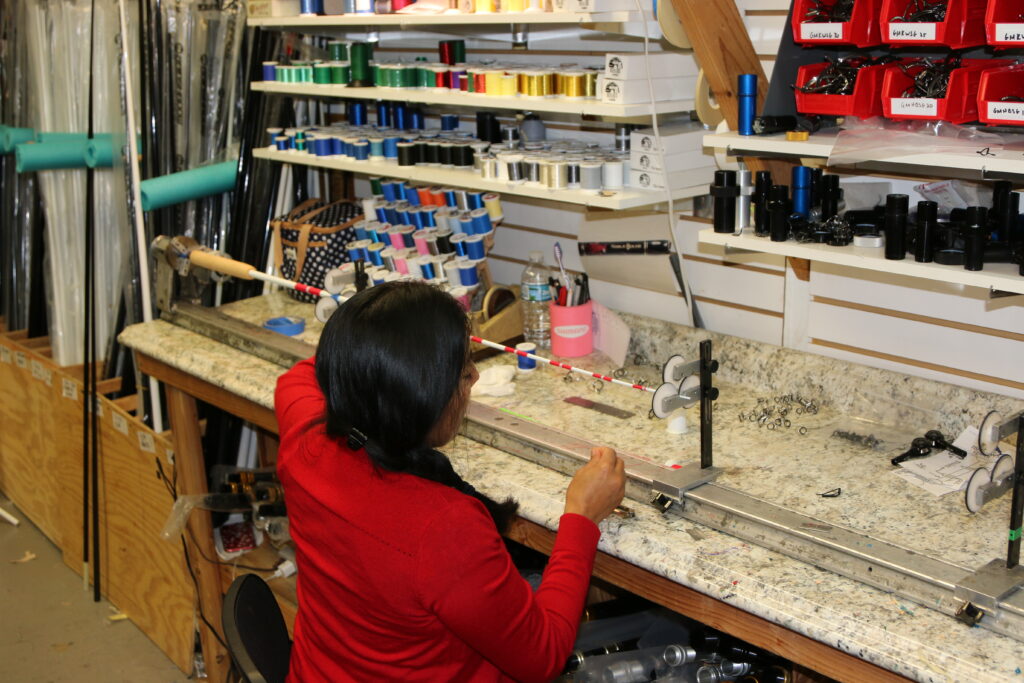
When it comes to cost, rods of the same length can vary widely, depending on the builder, the components and the intricacy of the design. “You get what you pay for. If you’re shopping around when outfitting your boat, don’t go with the cheapest guy,” DeCabia says. “Get the better guides, the better grips and parts. A basic custom rod can range from $300 to well over $1,000 depending on your choices. That can mean $3,000 or $8,000 for a set of eight 30-pound rods. When you start advancing to bigger rods, with Winthrop titanium sealed roller guides, the price jumps up drastically.”
Being confident in your targeted species goes in a long way when it comes to choosing your rods, but what do you do when you are outfitting a traveling boat that needs to be ready for everything … literally! “You should have a good idea of where you are going and what you are going to be fishing for, but I try to be ready for everything from 20-pound to 130-pound gear with full sets of eight of 20s, 30s and 50s, and six 80s,” Baker says. “We fish standup with our 20-, 30- and 50-pound setups so we use a little shorter rod. We built our standup rods to our storage area. Our rods had to be 60 inches off the reel seat butt; a pretty standard length for a standup style rod.”
“The six 80s I have are chairrods, and they are built to fit my cockpit. Ideally, they need to be able to reach from the gimble to out over the corner of the transom, so that they can clear the corners when a fish is close or straight up and down,” Baker says. Advances in line also helped Baker lighten up his arsenal of big guns without sacrificing strength or line capacity. “I didn’t go with any 130s. I built the 80-pound rods more on the heavy side … and put more drag on the reels. I sent the reels to Cal Sheets who built them up so that I can have a lot of top-end drag and still maintain a good free spool. I can fish 80- or 130-pounds on them. With braid backing, line capacity is not much of an issue,” Baker says.
Baker also brings along two short kite rods with roller tips that I use as dedicated bait rods. I put a regular Tiagra 50 on them and use those to catch live tunas and bonitas for live bait. We use them a lot when fishing the FADS since we are always live baiting with little tunas. They are about two feet long and we just leave them in the covering board and crank the little tunas in — just like bait fishing in Australia,” Baker says.
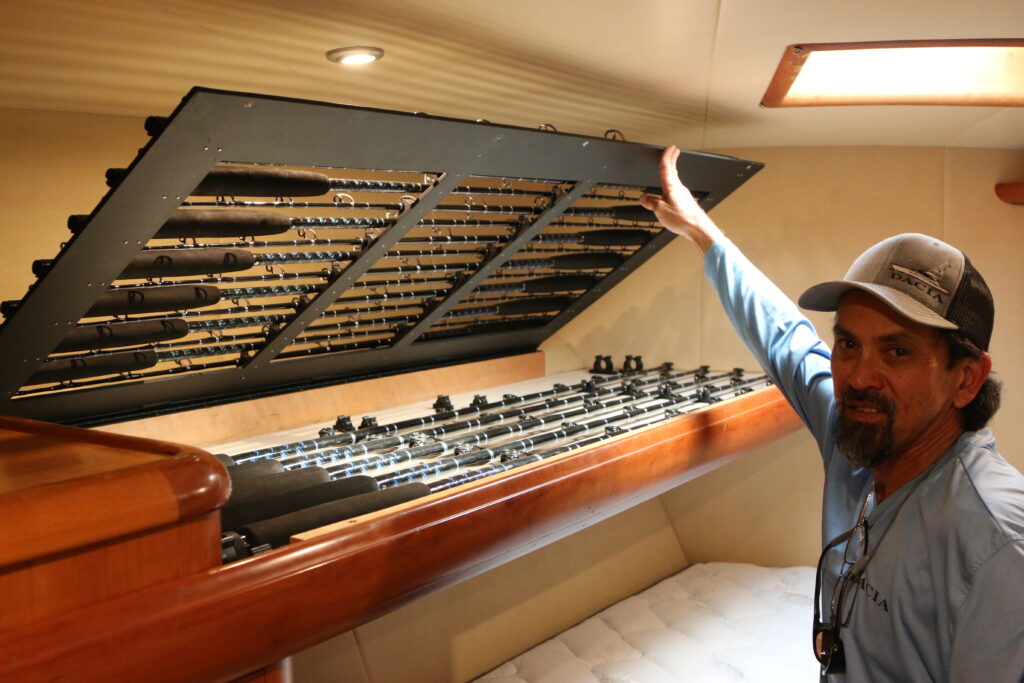
Last but not least, Baker also likes to bring some spinners along because, you just never know. “I have four spinning rods, 20- and 30-pound. We hardly ever use them, but they are good to have. Also, depending on where you are going and what you are doing, you might also need to bring some inshore stuff along. You might need to have some light spinning rods, for fishing the flats or off the back of the boat at night catching bait, goggle eyes or whatever. But of course, you need a place to store those too,” Baker says.
Cagle’s program is probably 98 percent bait and switch so his anglers’ skill becomes a huge part of the equation. He likes his rods to be consistent and be familiar to his anglers and his crew. “If you’ve been using the same set of rods for a while, I can look down and glance at the tips and see if anything is messed up — too much drag, the bait or a fish on the line is doing something weird,” Cagle says. “If you’re switching rods all the time you can’t tell, and that changes the way I drive the boat. If my anglers are using the same rod and reel, they get used to it as well. They know how it feels when they get a bite versus a blade of grass on the hook or the bait pushing through a wave.”
Cagle prefers using Crowder custom rods from White’s Tackle shop in Fort Pierce. “I don’t like to use anything over six feet six inches … if they get any longer they become cumbersome. Also, when a fish goes down, a shorter rod is better for an angler that’s standing up, it gives you more power.”
Cagle says eight is going to be your bare minimum set but that “we have 12. You need a couple of 50s and 80s if you are going to have a basic Bahamas set. Eight 25s, four 50s and two 80s is enough to get you started without getting too crazy.”
DeCabia says that rod builders are “very unique people. They are artists first and foremost. You have to have a good relationship with at least a couple of them. And they are always late. Four to six weeks becomes three months!”
Reels
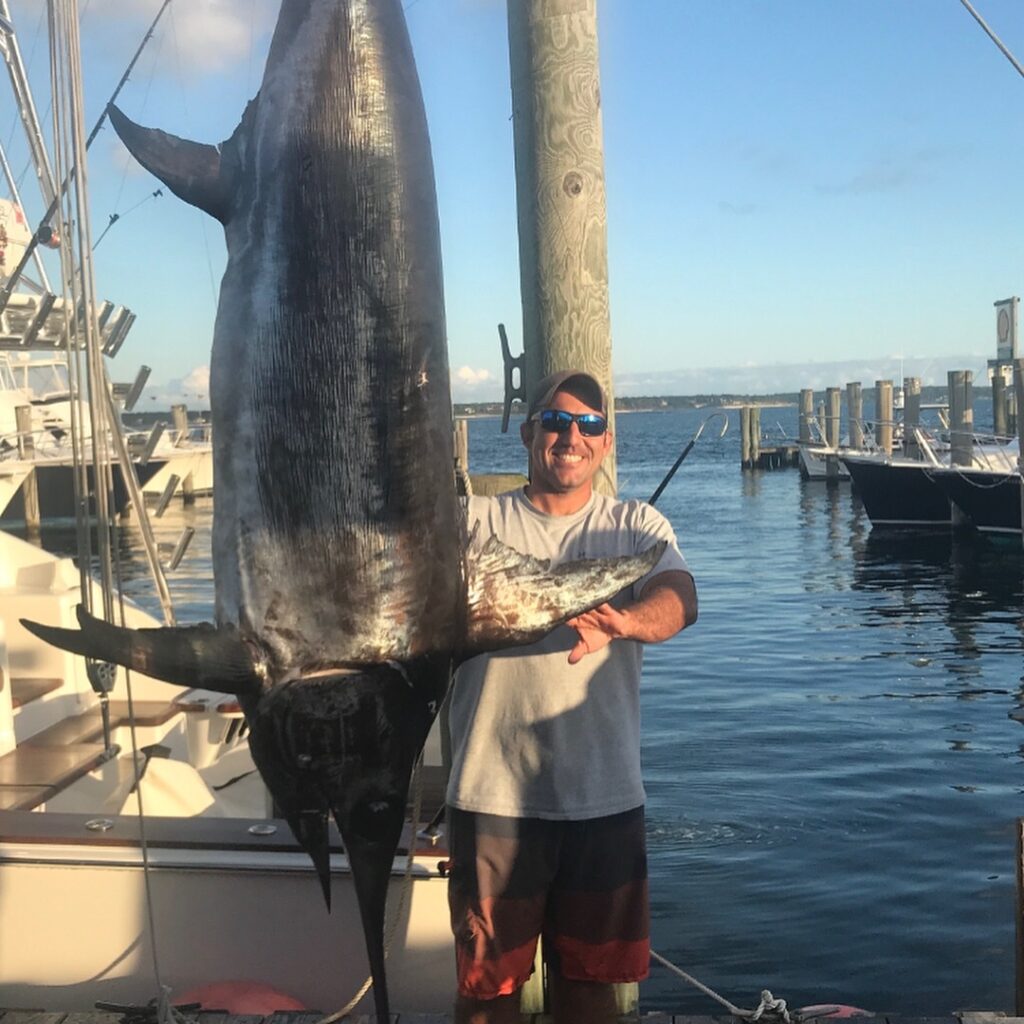
private label tackle company called Broadbill.com
Jim McGrath, owner of Grand Slam Tackle, started out as a manager 24 years ago at the Jupiter store and eventually helped open up the Riviera Beach location. After the passing of the owner, McGrath bought out the family and now owns the whole lot.
“Since our season in south Florida is virtually year round, we can stock everything all the time. It’s hard for tackle shops up north to stock all the same gear that we can. In our area (Florida), when it comes to reels, it’s mostly all Shimano,” McGrath says. “We sell a little bit of Daiwa, Penn, a little bit of Accurate, but 90 percent are Shimano sales … at least with the big boat guys. Every once in a while you’ll get some guy that reads something in a magazine, saw something on the Internet and they want something else. I try to talk them out of it but tell them I can get you anything you want. And then a year later they come around and want to get the Shimanos.”
McGrath says that the Talica 20 BFC and Talica two-speeds in 25-, 30- and 50-pound would suit anyone chasing small marlin and big sails in Costa Rica. “The biggest advantage these reels have over older models is their gear ratios, or the pick-up (The Talica 20 BFC retrieves 60-inches of line in a single turn of the handle — a big advantage when repositioning a bait for a bite). Shimano has always had super smooth drags and are powerful.
“About 15 years ago, Shimano’s Dave Pfeiffer started talking about highspeed reels with lever drag and a big gear. They finally got around to figuring it out, and took a little while for the Talicas to catch on. Once you fish with them, however, you find out it’s worth it. You can use a Talica 25 for a blue marlin pitch. You can put 50-pound on it and get plenty of drag. They are light and easy to maneuver. With the amount of braid you can put on there, you have enough line to catch blue marlin … on a small reel. It’s a whole new world to get people to see what’s out there and how much better it is,” he says.
Bill Buckland, owner of one of the premier big boat outfitters, The Fisherman’s Center on Blue Heron Boulevard in Riviera Beach, Florida, agrees that Shimano dominates the reel market in the big game world since the switch to light tackle bait and switch fishing. “The reel of choice is the Shimano BFC 20. Hard to beat for 20-pound tackle. You can catch everything else with the Talica. You can put 500 yards of 40-pound braid on it and go to the FADS in Costa Rica or to Mag Bay in Mexico and catch all the small marlin you can handle. Put 60-pound braid on it and you can fish for tunas in the Bahamas,” Buckland says.
“Their small size makes standup fishing a lot more fun,” Buckland says. “You don’t want to stand up with a 50-wide. These little reels have big gears, and high speed … and the ease at which you can turn the handle is unbelievable. Standing up and pitching this lighter tackle gets people in the game; instead of just sitting there and dragging and snagging while pulling lures.”
Both Baker and Cagle also agree on the Talica 20s and 25s as their main weaponry on the daily, but Baker prefers his 30s, 50s and souped up 80s to be Shimano Tiagras.
Dredges
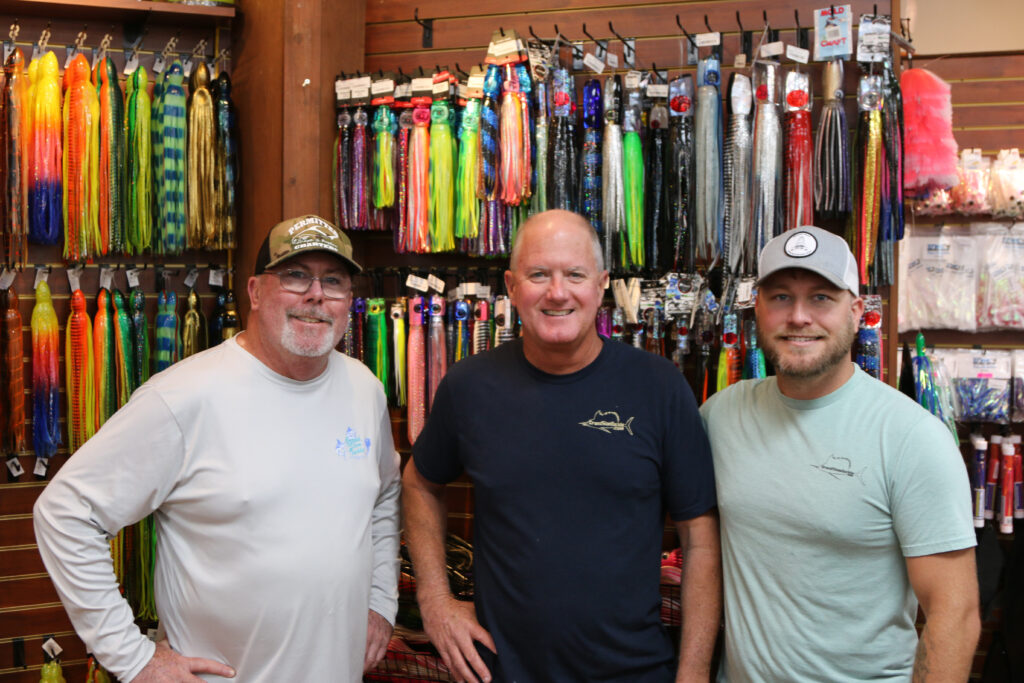
With all this bait-and-switching going on, there is of course a need for something to tease those billfish up into striking range, and that’s where dredges come in. There’s no doubting their effectiveness at raising billfish into the spread. Pretty much an artificial, pulsating bait ball pulled off your riggers, whether armed with dead baits or artificial mud flaps, squid or paddle-tail soft baits, most billfish have to come and take a peak when a dredge comes spiraling by.
Cagle, who literally grew up in the golden age of dredge fishing, says you have to have a good set of 24-volt LP dredge reels, “or you aren’t fishing. And if you don’t have a sonar, you are out to lunch! Spending some time out on the west coast with the California guys like Peter Groesbeck and Steve Lassley, showed me just how far behind we are to the west coast technology wise.”
Baker agrees and says he has probably “$20,000 to $25,000 just in two dredges … rods and reels and all the cable and the dredges themselves.” The one-piece of advice all of the captain sand shop owners reiterated over and over … give yourself plenty of time to get all your tackle together. Building 40 or 50 custom rods, or even ordering that many from a production house, can take months. Piecing together all of the other gear like the reels themselves, and all the spare parts like handles and extra drag washers all take time.
“Don’t expect to get it all done six weeks before you take delivery of your new sportfisher. If you do you’ll know how I feel when I go broke two days into a five-day Vegas trip … no action, baby!”








